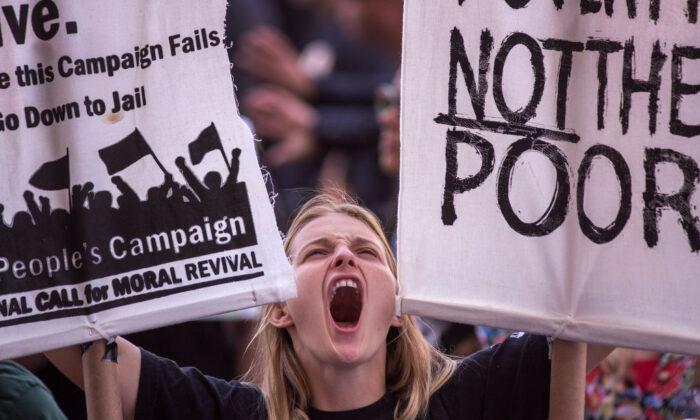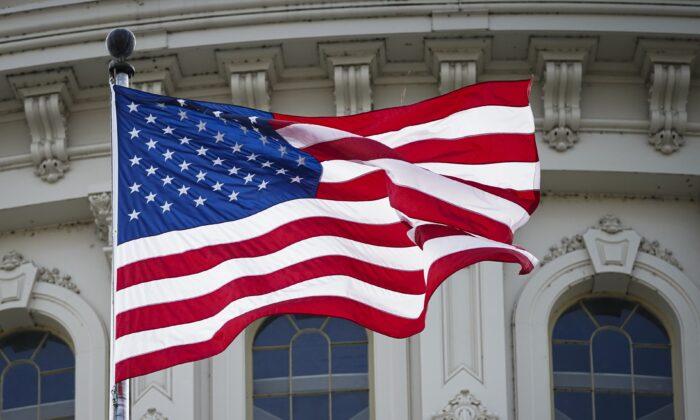People would be wise to think more critically about alleged racial conflicts in the United States and Canada.
In the summer of 2019, New York Times journalists led by Nikole Hannah-Jones launched “The 1619 Project.” Its purpose was to revise history by placing the arrival of African slaves in the British Virginia colony at the center of America’s historical narrative.
First published by The New York Times Magazine, the project was intended to play a formative role in American education. Some have said that its introduction in schools is part of a bold neo-Marxist intellectual plan to maximize racial discord.
Contending With Historical Imperfections
In the fall of 2020, led by civil rights leader Robert L. Woodson Sr. and American Enterprise Institute scholar Ian Rowe, a distinguished group of black American scholars organized “1776 Unites” and developed a black history curriculum to counter The New York Times’ project.Needless to say, this book has received scant attention from progressive academics, educators, and media pundits. For the left, teaching anything but the 1619 curriculum amounts to ignoring the stain of slavery on the founding of America.
Woodson’s team of scholars presents a different view. “Red, White, and Black” is dedicated to the idea that Americans from every imaginable condition or background can come together in pursuit of their dreams.
The lead essay in Woodson’s collection is by Wilfred Reilly, a professor of political science teaching at Kentucky State University. Reilly has a different take on America’s historical imperfections. He argues that the United States began in 1776, not 1619. He says the notion that the Revolutionary War was fought to preserve slavery, that American capitalism is a legacy of human bondage, and that racism is a systemic part of American life is demonstrably false.
Scholars from 1776 Unites point out that the principles expressed in the American Declaration of Independence challenged the fundamental legitimacy of slave ownership. In the following century, during the course of a costly civil war, Abraham Lincoln’s Emancipation Proclamation finally ended the odious practice.
Mid-1960s civil rights legislation corrected the abuses of postbellum Jim Crow laws, and years of affirmative action mitigated the legacy of the American South’s “peculiar institution.”
Of course, singling out adversarial human relationships to disrupt free societies has long been a preoccupation for neo-Marxist ideologues. Racially charged historiography is constantly advanced by an ideologically uniform cohort of progressive academics and journalists who are rewriting the past to promote resentment, wealth redistribution, and reparations.
In Quebec, where I grew up and worked for most of my life, a famous pre-Confederation, British governor’s portrayal of “two nations warring in the bosom of a single state” was kept alive by self-serving progressive intellectuals for more than 150 years.
From the mid-1970s to the mid-1990s, Marxist-liberationists, empowered by the province’s Parti Québécois (PQ), did their best to stoke feelings of resentment between French and English citizens and convince us that we couldn’t possibly coexist in a single nation. Two Quebec independence referendums were conducted by PQ governments, but a majority of ordinary citizens rejected the proposed schism.
Undaunted by their failure to break up the nation over a French–English conflict, cultural Marxists have now turned their attention to stoking animosity and resentment among Canada’s indigenous peoples.
In sync with the racially charged intellectual atmosphere in the United States, Canada’s Truth and Reconciliation Commission (TRC) produced an unqualified condemnation of the way indigenous peoples have been treated throughout Canadian history.
The Real Conflict
In the United States and Canada, citizens should reject the negative influence of neo-Marxist ideology.The left opposes traditional virtues, well-ordered liberty, and national sovereignty. They favor permanent socialist majorities, “woke normativity,” and the surrender of economic freedom to Davos globalists and the Chinese Communist Party.
Cultural Marxists are becoming more extreme and less credible. They deliberately focus on the absolute worst in the history of any people they oppose.
Common men and women in North America have already repudiated the destructive social prejudices that fractured nations over the past two centuries.
For nearly 60 years, hard-working citizens have been able to live happy and productive lives in desegregated communities. People of diverse racial, ethnic, and linguistic backgrounds fall in love, marry, and raise families. They work together, play together, serve their country together, and seldom avoid engaging one another in almost any form of collective endeavor.
The real conflict isn’t between people of one skin color or another. The division is deliberately generated and kept alive by political elites in the political arena.
As Reilly wrote, “The U.S. is a flawed, but very good country, where it is simply not terribly hard to succeed, given hard work and personal responsibility.”
At the grassroots level, the same can be said for Canada.
North Americans are divided by ideology, not race.





